The mezcal brand Palomas Mensajeras first landed on our radar in September 2019 at the Mezcal Reviews 3rd anniversary party. That night, we were honored by the attendance of legendary Mexican spirits importer William Scanlan of Heavy Metl Imports. He arrived with a few agave gems not-yet-available in the US. Holding up a bottle, he pointed at our veladoras. “Y’all should try this before it’s gone,” is probably what he said (it was a long time ago).
It was a bottle of Palomas Mensajeras Ensamble made with Agaves cupreata, inaequedins, and rhodacantha. This was something new and special. The brand logo had a dove clutching a card. The bottom half of the label was a round photograph of a small island. This mezcal was from a place in the Mexican state of Michoacán we had never heard of: Oponguio. William was very excited about this mezcal and the family making it.
This ensamble tasted both familiar and different. Familiar like other non-Oaxacan flavors we’d experienced but composed in a different way. We were excited to learn more, but the mezcal tasting was in full swing and we didn’t have a chance to dive very into the details. We figured it would arrive stateside soon.
Land of Cupreata
Looking back on that night, it is interesting to note that one of the flights we created was called All Cooped Up. It featured three mezcals made from 100% Agave cupreata. Oddly enough, none were from the Michoacán. Instead, one was from Oaxaca and the other two were from Guerrero. Michoacán really should have been represented. Cupratea is endemic to Oaxaca’s neighbors: Guerrero and Michoacán. So if you see Cupreata in an Oaxacan mezcal, the agaves were likely transported from native states or cultivated in Oaxaca.
Back in 2019, the only widely-known Michoacán brands exported across the US were Don Mateo de la Sierra and La Luna. There are also a few other releases under labels like Derrumbes and Mezcales de Leyenda. You may notice that nearly all brands from Michoacán heavily utilize Agave cupreata (also called Maguey Chino). So it pretty much the Espadin of Michoacán right? Not quite! Unlike Espadin, Cupreata can only be grown from seeds. It is more labor intensive to grow these agaves for mezcal production. One cannot simply replant a bunch of clones that sprout up from the roots like you can with Espadin and Agave tequiliana.
When we learned William was working on importing Palomas Mensajeras, a brand from Michoacán, it made us realize we needed to branch outside of Oaxaca in our never-ending journey to understand the diversity of agave spirits.
Fast-forward to 2023 and we finally booked a mezcal trip to Michoacán. By then, the Heavy Metl team had been importing the Michoacán “rum” brand Uruapan Charanda into the US for a few years. Agave spirits brands like Siembra Metl and Mezonte, which featured incredible small-batch releases from Michoacán, could be found around the US. It felt like spirits from Michoacán were starting to carve out their own identity and the trip was well-timed.
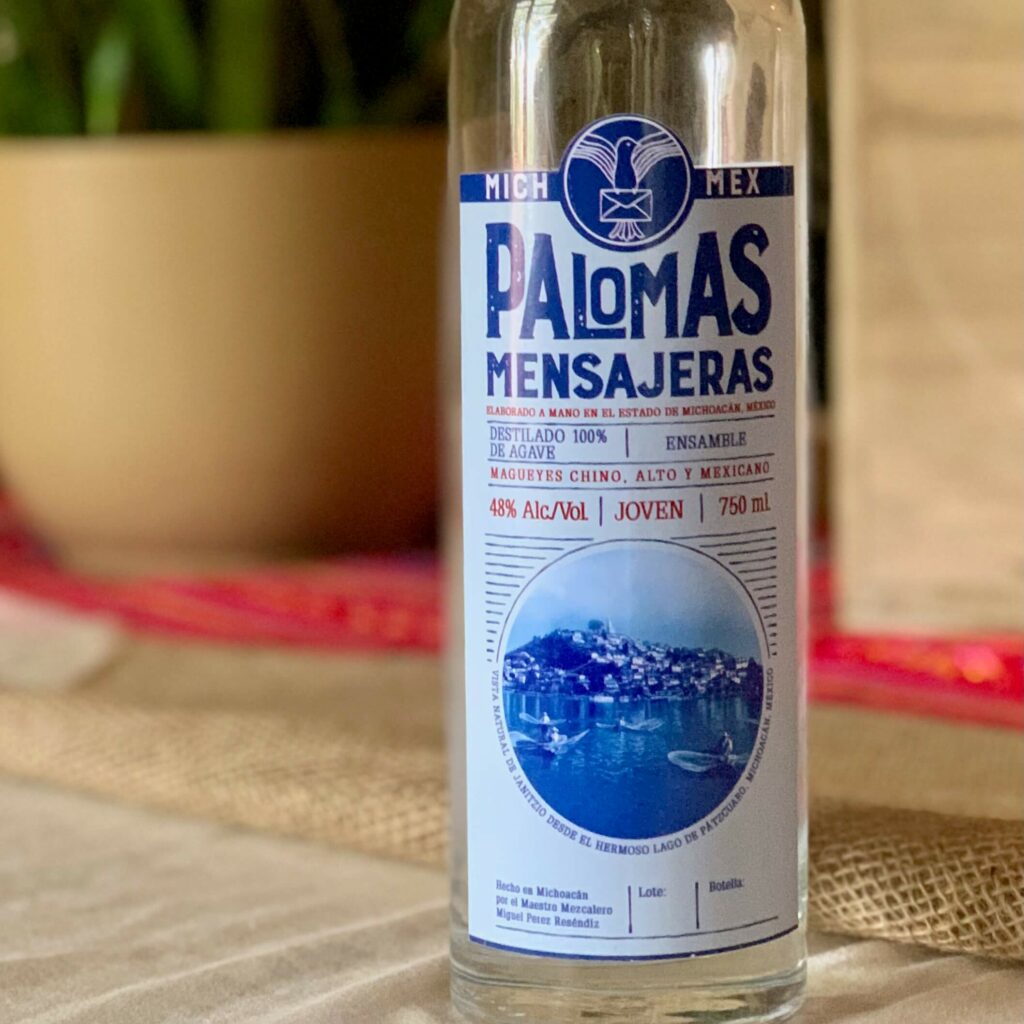
A bottle of Palomas Mensajeras Ensamble
Palomas Mensajeras was scheduled to land in the US after a long delay due to Covid; the silver-lining being that the first batches that William was importing were rested in glass for over 4 years!
A journey along Lake Pátzcuaro
In April 2023, we arrived in the capital city of Morelia for a week-long agave adventure. On a Monday morning, we set out to Oponguio with our compañero Pancho who was visiting from Guadalajara. I was feeling a bit dinged up from the previous night as I sat in the front seat, staring at the road ahead. We headed southwest out of the city. Soon we glided along winding roads, up and down over the small hills. With the windows down, cool wind filled the car. The morning weather was still moderate as the sun climbed in the sky. Pancho blasted some kind of awesome hybrid reggae from one of his many excellent Spotify playlists.
Pátzcuaro Lake was in sight as we drove down closer to the shoreline. The most famous of the lake’s five islands, Isla de Janitzio, has a Christ the Redeemer-esque statue reaching towards the sky. The statue is actually of José Maria Morelos. He was a revolutionary leader during Mexico’s quest for independence and tragically executed by the government of Spain. The lake itself has volcanic origins and is surrounded by volcanic mountains with steep slopes. Pátzcuaro Lake and its nearby wetlands are home to endemic species like the Lake Pátzcuaro salamander. It looked serene from the road. There wasn’t a boat in sight. We drove further.
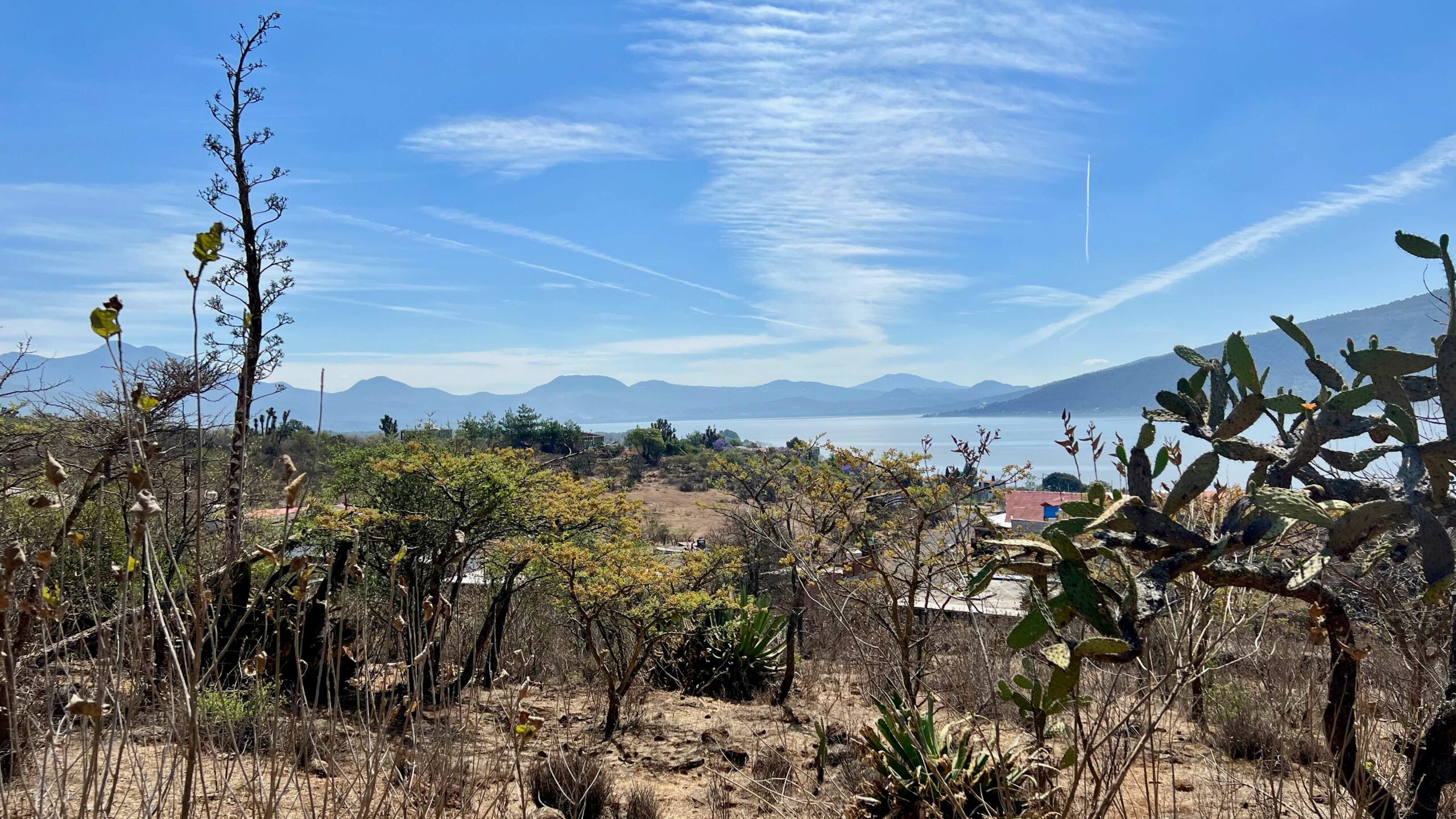
The view of Pátzcuaro Lake from a hill across from Palomas Mensajeras
Over four generations of messengers
In Michoacán, it should be noted that production sites are commonly called vinatas which is similar to parts of neighboring Jalisco. The root word being vino (wine) which relates to the origins of the term “vino de maguey” which is still used by certain producers when referring to agave spirits.
While the Palomas Mensajeras brand itself is about 15 years old, the Perez family has been producing for four generations. Currently led by Don Miguel Reséndiz, his sons Miguel and Melitón are the fifth generation. In 1996, Don Miguel was producing mezcal in Etúcuaro, northwest of Pátzcuaro Lake, in a hidden vinata that he built with his brothers in 1979. Before that, they had been arrested for illegally producing mezcal.
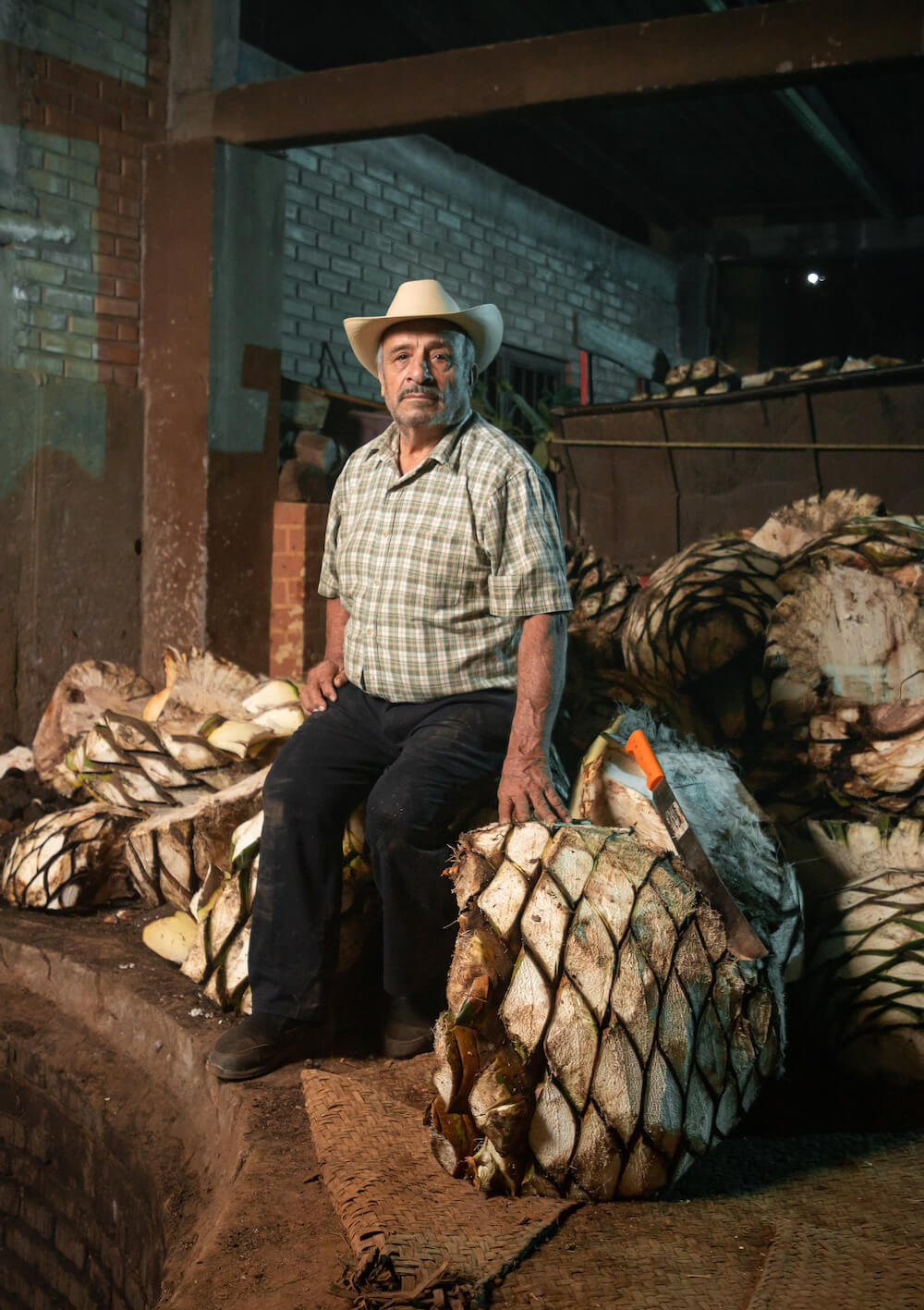
Don Miguel (photo courtesy of Heavy Metl Premium Imports)
Agave spirits have a long history of being prohibited in Mexico. Originally the Spanish prohibited local production of agave spirits to boost their own interests in imported alcohol products like Spanish brandy. Later, production was legitimized in certain areas like Tequila where the government could collect taxes. An extreme example is the northern state of Sonora where bacanora production was illegal up until 1992!
In Don Miguel’s case, the production of mezcal was not illegal in Michoacán at the time. However, there was a persecution of clandestine vinatas who did not have the economic resources to be able to pay for distilling permits. The enforcement was carried out by military inspectors who, when they found a clandestine vinata like Don Miguel’s, would often take things of value or extort them and destroy their stills. Unfortunately, someone jealous of Don Miguel’s success reported him to the authorities. When they arrived they tried to take things of value, but Don Miguel didn’t have enough things of value so they were carted off to jail.
Aside from the military inspectors, selling mezcal in Etúcuaro was a tough business in the late 90s. He traveled around to different parts of the state to sell his mezcal, which at that time was mostly Agave cupreata (Chino). During that time, the owner of the defunct ex-hacienda tasted his mezcal and asked him to distilled his supply of Agave inaequidens (Alto) into mezcal. Don Miguel had never worked with Inaequidens but accepted the offer and traveled to Opongio twice a year over the next 5 years at the ex-hacienda.
In 2001, Don Miguel noticed that Opongio had become known as a great town to find quality mezcal, his mezcal. The irony was that he didn’t live there at the time. It was then that he decided that there was more opportunity to produce and sell mezcal in Opongio instead of Etúcuaro. So after 10 years of hard work and slowly saving money he was able to construct his own vinata in Opongio and move his family there. It would continue to grow into what it is today.
¡Ay Michoacán!
The family never sought to have their spirit certified as mezcal. They have been producing “mezcal” for generations and don’t see a reason to go through the process. It is expensive and too limiting with what they can and can’t do.
Back in the mid-90s when Don Miguel was distilling in Etúcuaro, the Regulatory Council of Mezcal (CRM) was formed far away in Oaxaca. Over the years, the CRM has instituted rules and regulations. Hundreds of mezcaleros have likely been affected by these changes to “mezcal”. Meanwhile, Don Miguel and his sons continued to do things their own way in their peaceful vinata along the lake.
Reflecting on our visit, I stared at the tagline on their bottle label. It really struck me as a perfect family motto.
Later I learned it was from Don Miguel’s favorite song Que Lindo Es Michoacán:
Palomas Mensajeras deténganse en su vuelo si van al paraíso, sobre el volando están. ¡AY MICHOACÁN!
This roughly translates to:
Messenger Doves, stop your flight if you’re heading to paradise.. you’re already above it. Oh Michoacán!
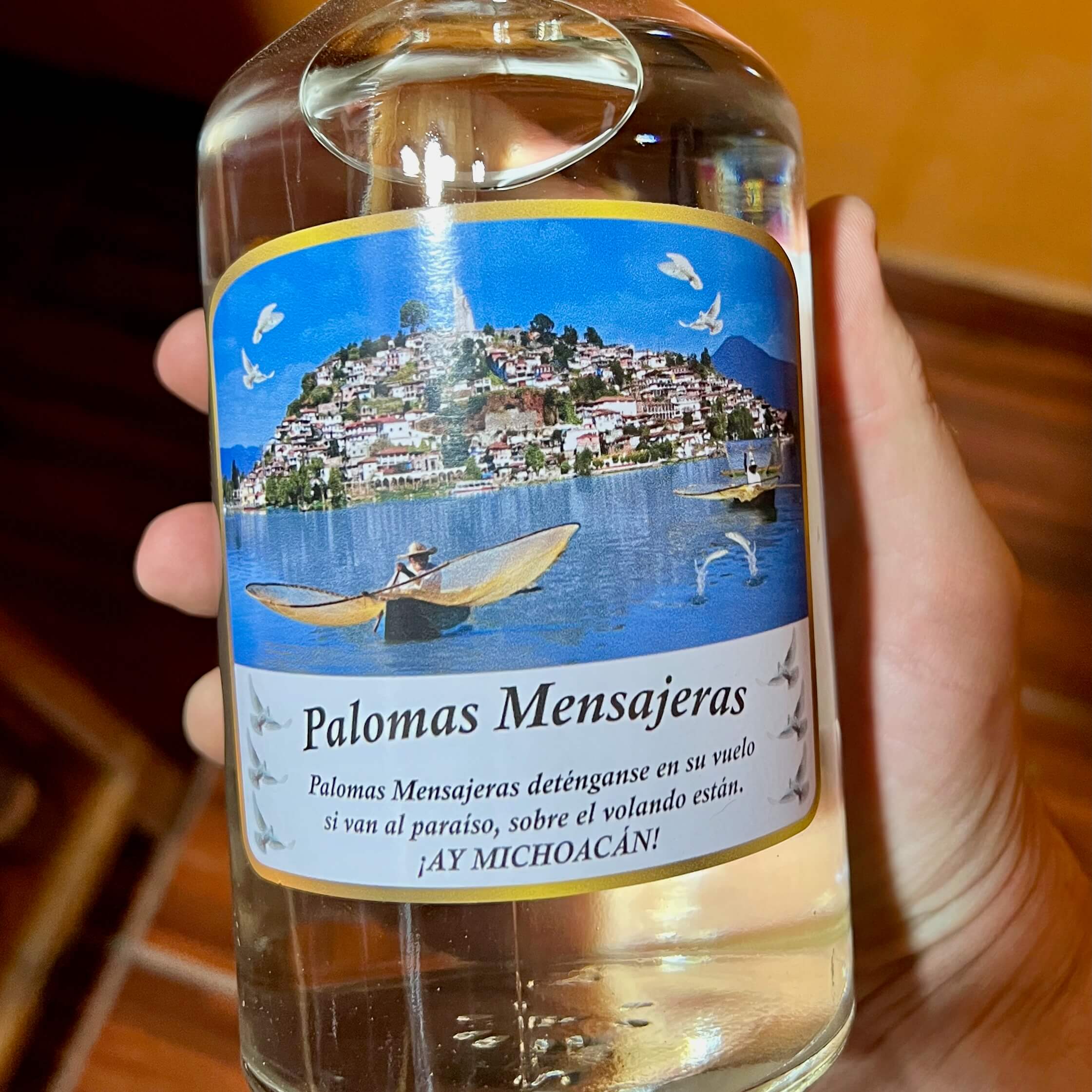
An older bottle with lyrics on the front; they are on the back of newer labels
A day with Migue & Meli
From the main road, the Palomas Mensajeras distillery came into sight on the left. On the right side of the road was a large patch of different species of agaves. We pulled off the road and parked in the shade of the large building.
We soon met brothers Miguel and Melitón who both went by their shortened nicknames Migue and Meli. We arrived around ten that morning… little did we know we’d spend the next 12 hours with them and share about 12,000 laughs.
Don Miguel was in Chicago at Mexico in a Bottle promoting the upcoming US launch of their brand. This was one of the rare times that our mezcalero hosts were a similar age to us. It seemed like everything was running smoothly with Don Miguel out of town, but the day wasn’t over yet.
Before touring the facility, we crossed the road for a short hike up the hill. After a few minutes, we turned back and could see the lake behind the vinata, extending east into the distance.
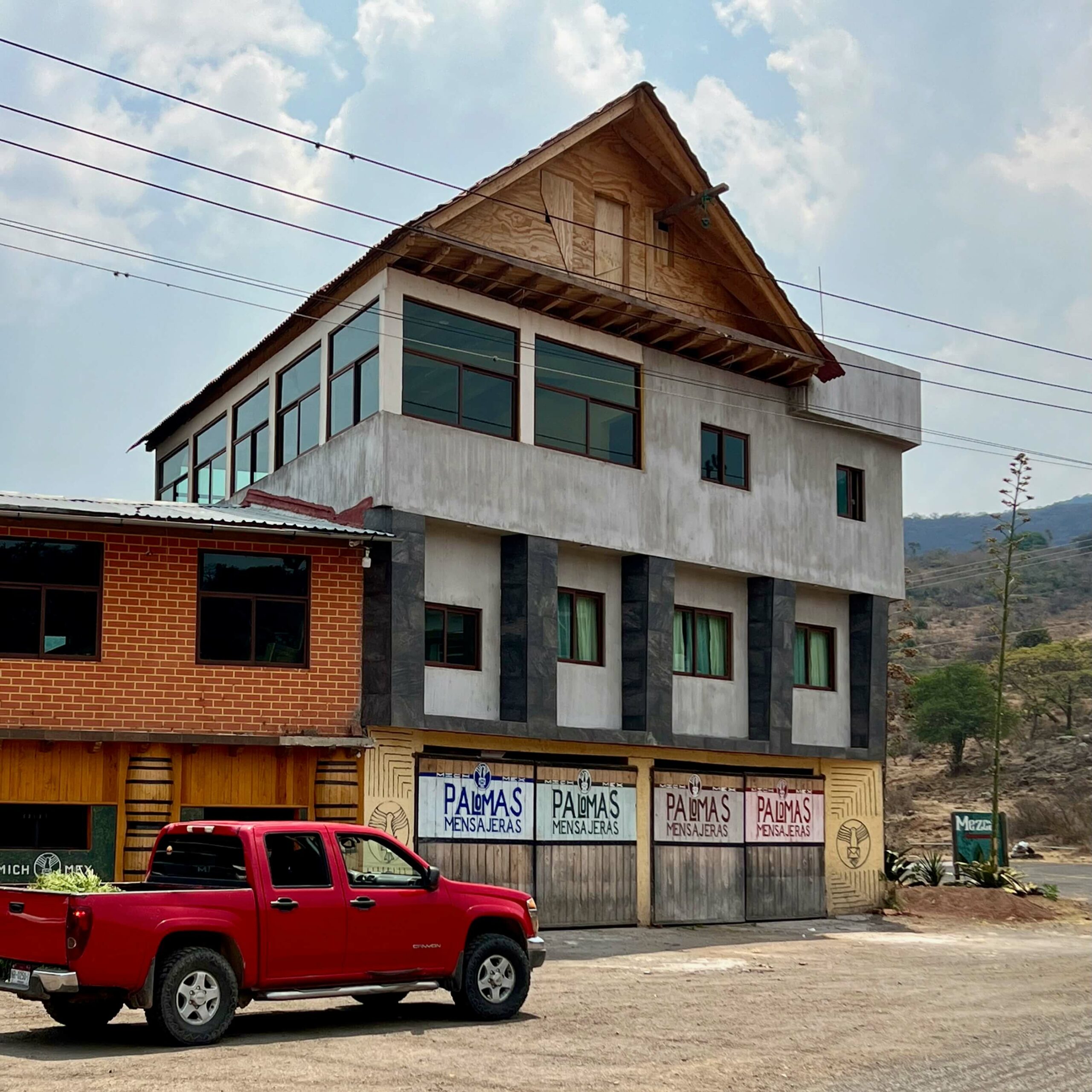
Partial view of the Perez home and vinata
It was a clear day but the famous lake island of Janitzio was out of sight, on the opposite end of the lake. The hillside was covered with tall cacti and agave – many of them shooting up their quiotes.
After an incredible breakfast of chilaquiles covered in crema and cotija cheese, I was feeling much better. Next we headed out to explore one of the agave fields where they source the raw material for their destilados. Slowly we made our way uphill, off-road in a truck. This route didn’t appear to have a clear path, but they knew where they were going. After parking, a Tequila-style coa, which they called a “trinchera” was taken out of the back of the truck. It was meticulously sharpened by Migue as we stood nearby, marveling at the agaves in every direction. The brothers estimated there were five thousand agaves on this wild mountainside. This field was owned by a friend who had a deal worked out with them. Most of the plants were wild and many were left to go to seed.
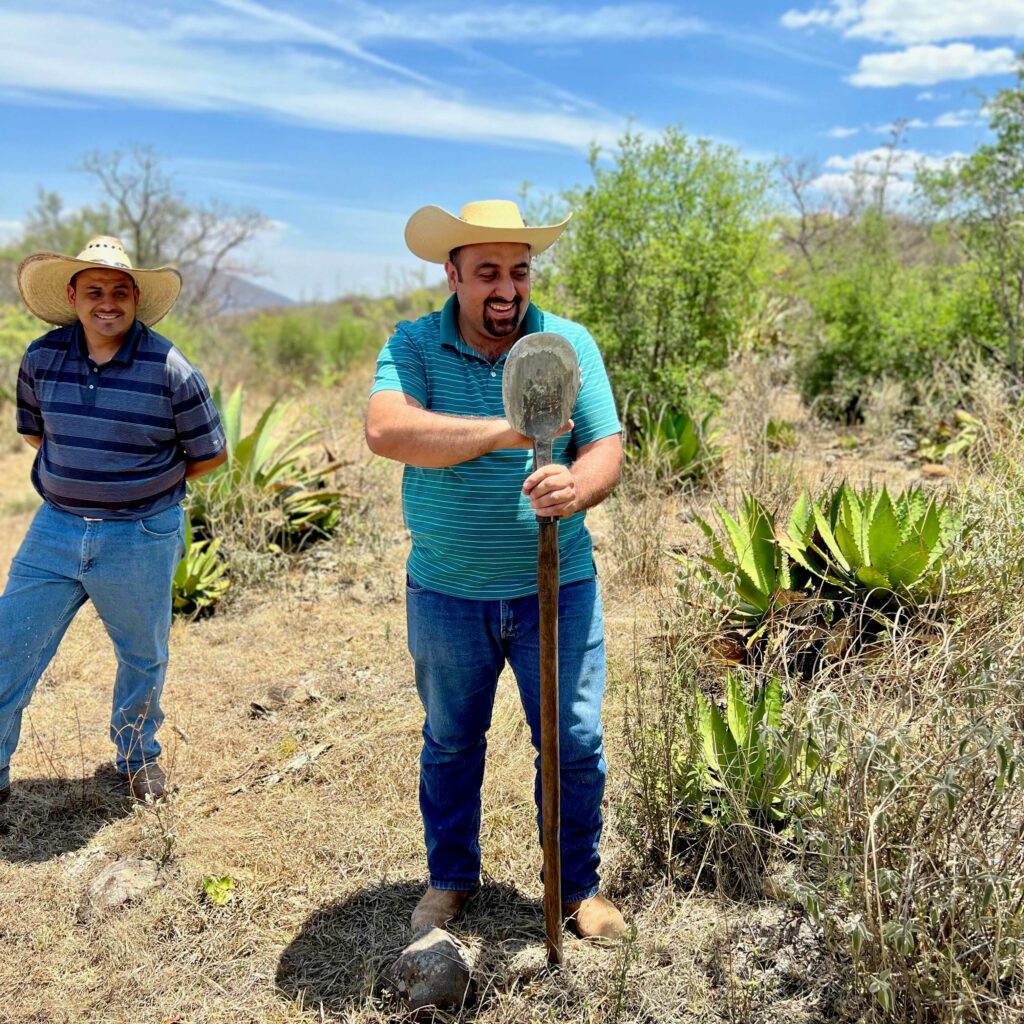
Meli (left) watches as Migue (right) sharpens the trinchera
Once the sharpened trinchera was ready, Migue began expertly trimming away the pencas from a large round agave. Then it was the gringos’ turn, hacking away. After separating the large piña from the root, a chainsaw was used to cut it into smaller pieces.
At this point, we knew that Michoacán was famous for agaves like Cupreata and Inaequidens, but what about other agaves? The Palomas Mensajeras Ensamble featured Agave rhodacantha (Maguey Mexicano) a plant not native in the state.
In 2004, a legendary Maestro Mezcalero in Oaxaca gifted Don Miguel a handful of Rhodacantha seeds to take back to Michoacán. He has been cultivating them from seed and hijulo ever since. The plants took 12 years to mature. Because of this, the ensamble and single agave Mexicano release are a relatively new mezcals for them. The ensamble is now their most popular product.
Another brilliant move by Don Miguel was that he collected hijuelos (clone offshoots) from blue agaves in Jalisco to replant in their agave fields. Now they are growing a supply of Agave tequiliana for future bottlings. Their various releases utilize both wild and cultivated agaves. One of their newest experiments is a mezcal made from Agave salmiana. In Michoacán, we got the sense that it was uncommon to use Salmiana for mezcal as it is most often used for pulque. In general, most mezcaleros in the state are focused on Chino (Cupreata) and Alto (Inaequedins), but the Perez family is expanding their knowledge and product line, as Don Miguel first did years ago when he first distilled the challenging Alto.
As we loaded large pieces of sugary Chino in the back of the truck we learned a new tidbit of interesting agave info. The brothers told us that when the agaves have more sugar, the sap is less itchy. In contrast, Salmiana has less sugar and the sap can be very itchy on bare skin. We finished loading the freshly cut agave pieces into the truck. Our hands tingled slightly as we drove back down the mountainside.
Cooking a fresh batch
Arriving back at the vinata, the Palomas crew was preparing one of the two underground ovens. Perfectly cylindrical and at least seven feet deep, it was a bit unsettling to stand beside the edge while hot volcanic rocks simmered at the bottom. After letting the bottom layer of rocks absorb heat, they added more rocks on top. Then Maguey Alto piñas were added directly on top of the layer of cool rock. Next, mats made of palm leaves were used to create another layer before the Chino piñas were added. A tarp was placed over the agaves, then another layer of mats, before everything was covered in a heavy layer of dirt. Dust filled the area as soil was shoveled atop the mound of cooking agaves. Migue and Meli took turns shoveling before signaling the work was done.
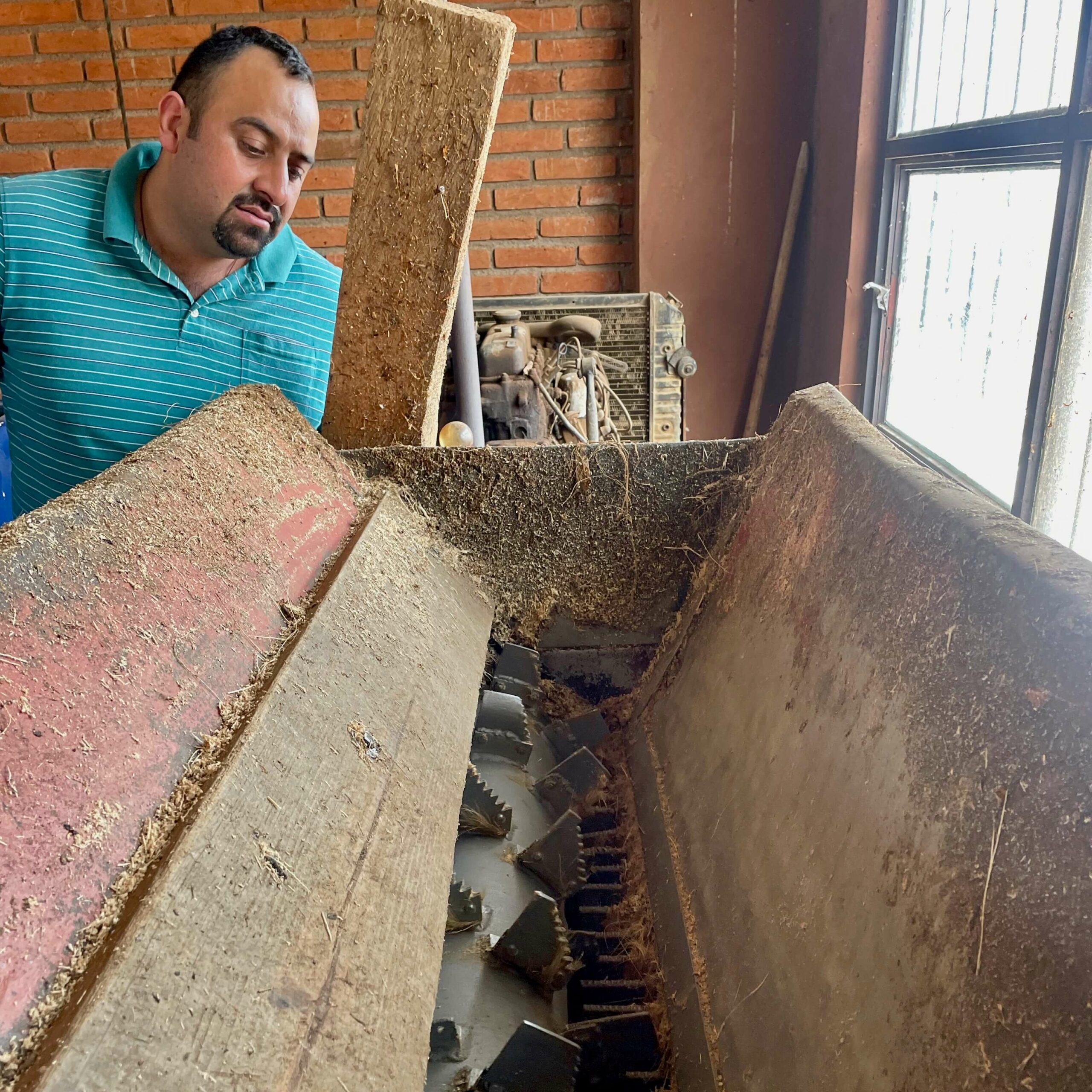
Migue inspects the agave mill
Cans of Victoria beer were passed around as everyone took a break. We got beers as well, perhaps undeserved but very welcomed. Peering out the back windows of the partially covered cooking area, we could see what looked like a giant swimming pool. This stored water which was used for various purposes including cooling the stills during distillation. The vinata had a rainwater collection system that funneled rain into the enormous backyard storage pool. What about the water added to the mezcal during fermentation? That was well water delivered in a large tanker truck.
After the agaves finished cooking, they would be shredded using a modified corn stalk grinder powered by the engine of a 1978 Datsun. Their father crafted this incredible machine and they’ve used it for the last 15 years. Prior to that, they milled cooked agaves by hand.
Fermenting and distilling
The fermentation vats were in another part of the vinata. There were 14 in total, small enough so they could be moved around the fermentation room if needed. Sometimes they were all full. The Chino would ferment for 7-10 days while Alto took around 14 days.
When we visited they were using stainless steel fermentation tanks. Not long before our visit they fermented in rectangular clay pits lined with oak planks. The first batches imported into the US were done using this method. They switched to stainless steel because of the loss of product absorbed into the ground.
The “Tarascan” stills near the fermentation room were the same as the Filipino stills in the region. The wooden tops look like a barrel flared out at the bottom. We were told the encino (oak) wood tops could be used for 2 years before being replaced. Each still held 220 liters. The stills were built in a multi-level room with the tops and condensation caps on the upper level. Going downstairs, the team could feed the ovens with wood to power the distillation.
Near the ovens, we looked down a dark hallway. Migue noticed our curiosity and turned on the lights. As we’d soon become familiar with as the week progressed, many vinatas in Michoacán have a cava (cave). Cavas are underground areas used to store mezcal. As we entered the dimly lit cava, we could see numerous glass demijohns lining wooden shelves. They even had a demijohn set aside for Cantina OK! based in Sydney, Australia.
Sipping after sunset
After a long day and more food, the sun had set and we could no longer see the nearby hills. Believe it or not, we hadn’t tried any mezcal at this point… just lots of Victoria beer. After learning so much, we were very excited.
First, we sipped through the core line: Chino, Alto, Mexicano, and Ensamble. This makes an excellent flight because you can try the individual components of the ensamble. During production, the different agaves are fermented separately, but then distilled together in roughly equal parts.
After that, we had the pleasure of trying some of their other releases, small-batch and experimental.. none currently exported:
- Azul
- Salmiana
- Ensamble of Chino and Azul
- Ensamble of Chino and Alto
- Ensamble of Chino and Mexicano
- Ensamble of Mexicano and Alto
We all had different favorites amongst the ensambles but I gravitated towards the Chino and Alto because those were the native agaves. In addition to a few more small batch releases, we tried “flor” which was what they called puntas. An expressive 65% ABV Mexicano which was a rare treat. The experimentation with ensambles signals big things to come from Palomas Mensajeras team. We can’t wait to see small-batch Michoacán mezcals make a bigger impact in the US market.
As the laughs grew louder, the night also grew darker. After an amazing day with Migue and Meli, it was time to head back to Morelia. This was only our second full day in Michocán and we had learned so much. The creativity and foresight of Don Miguel and the hard work of his sons had elevated the Perez family mezcal legacy to another level.
If you’re ever flying around Mexico looking for good mezcal.. stop when you reach Michoacán, because you’ve already found it. ¡Ay Michoacán!


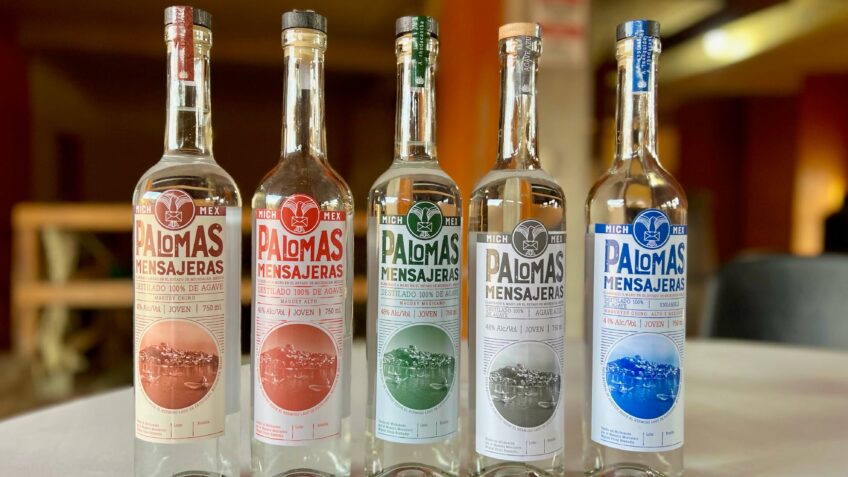
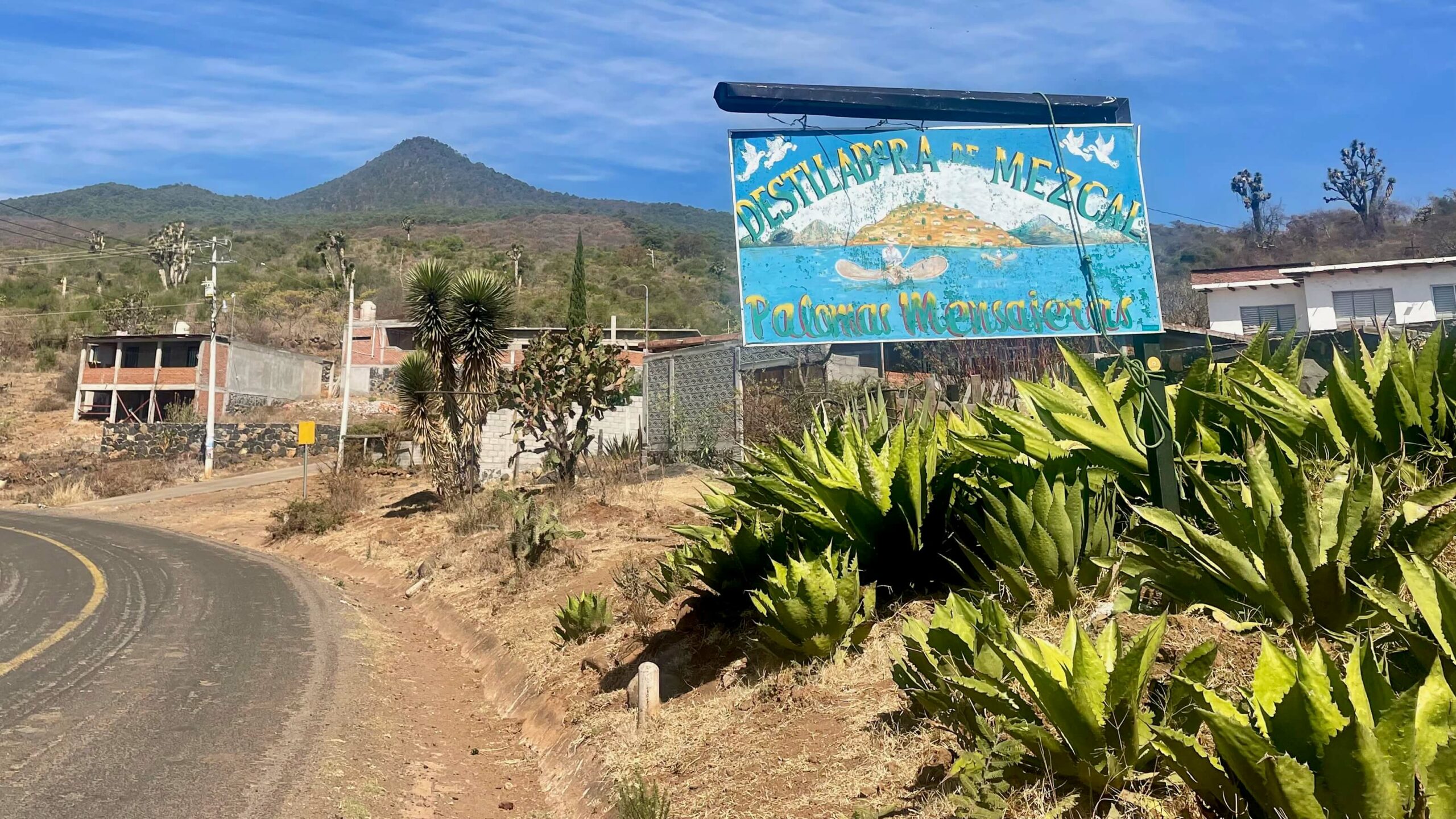
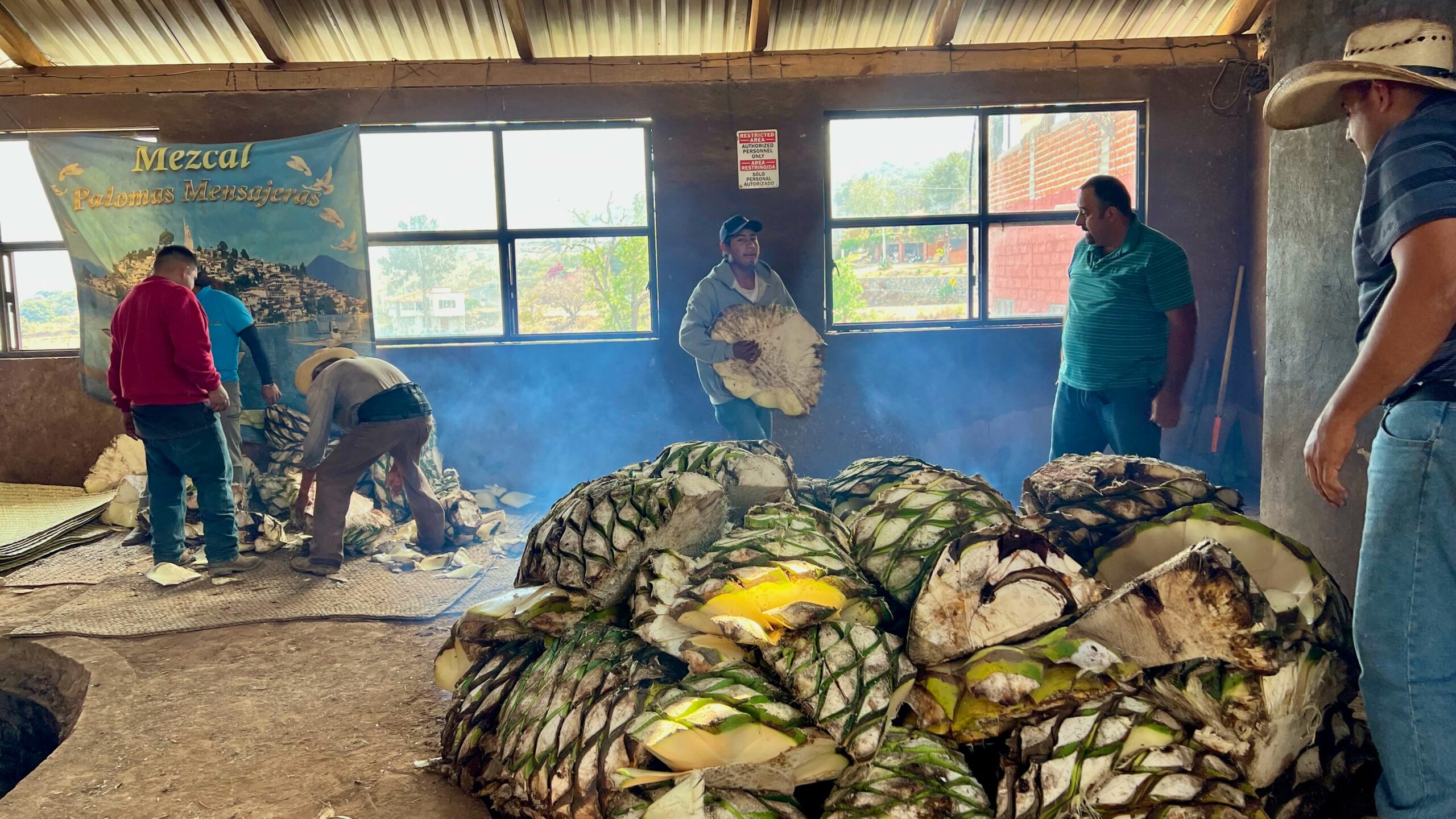
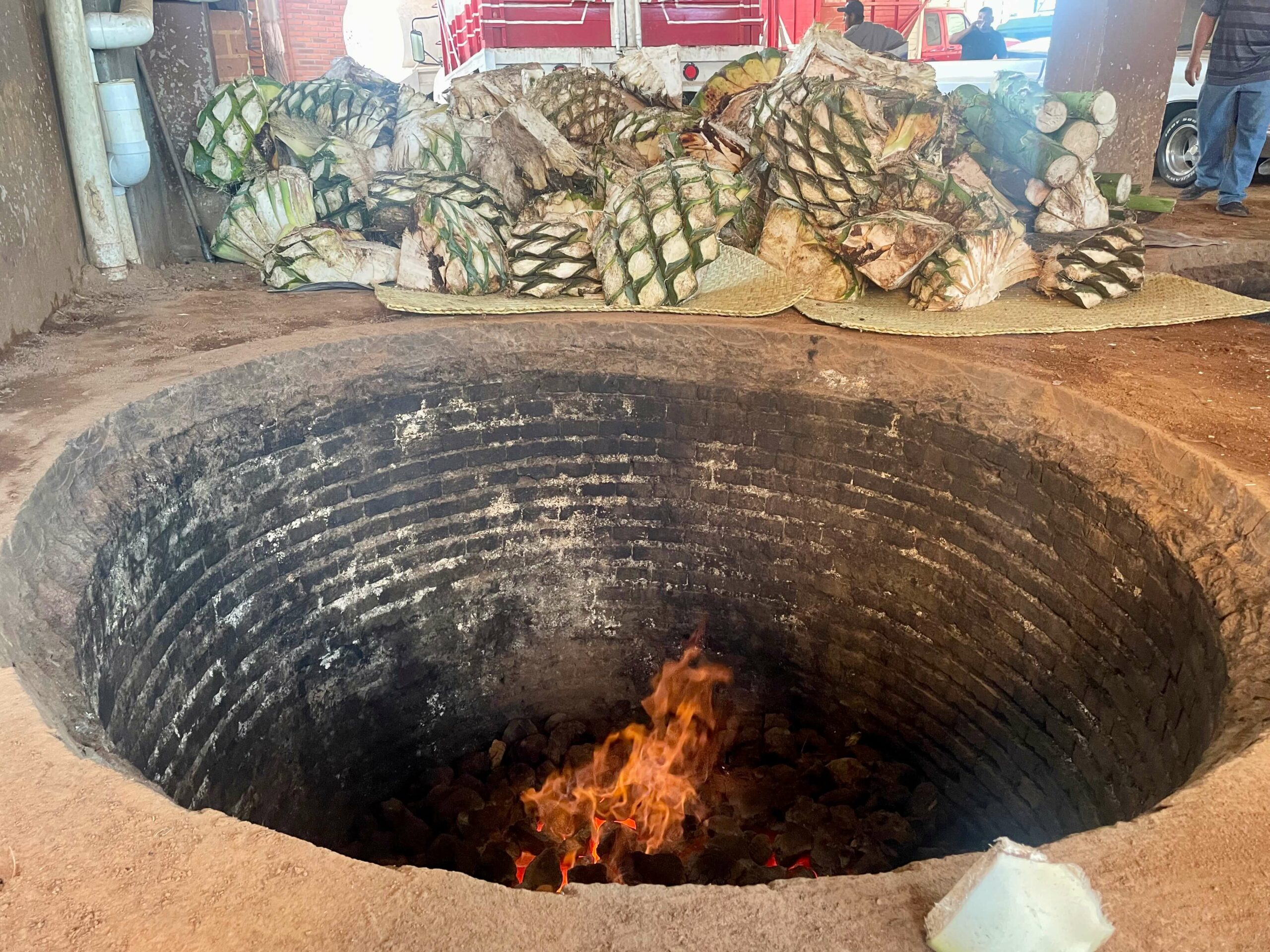
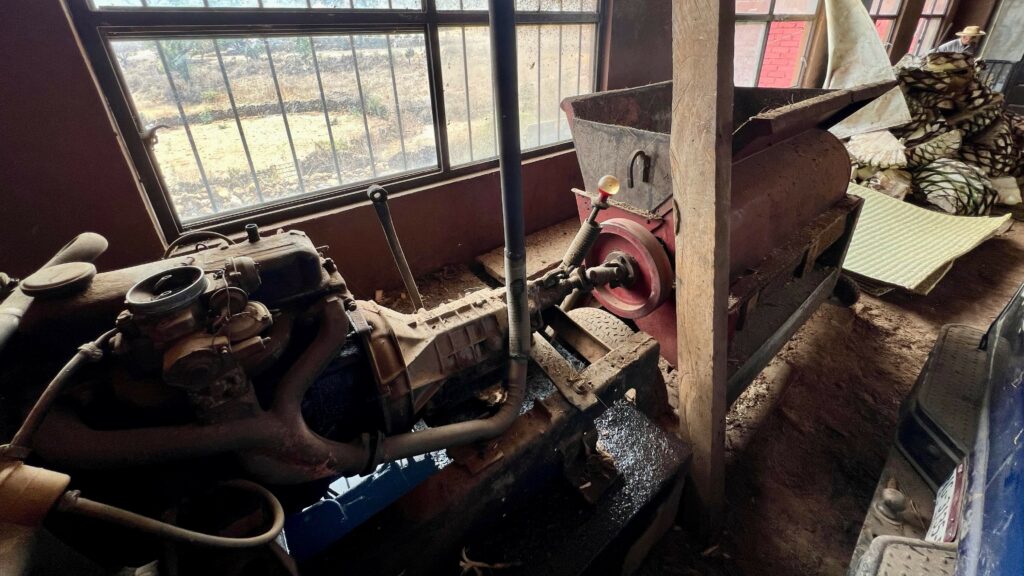
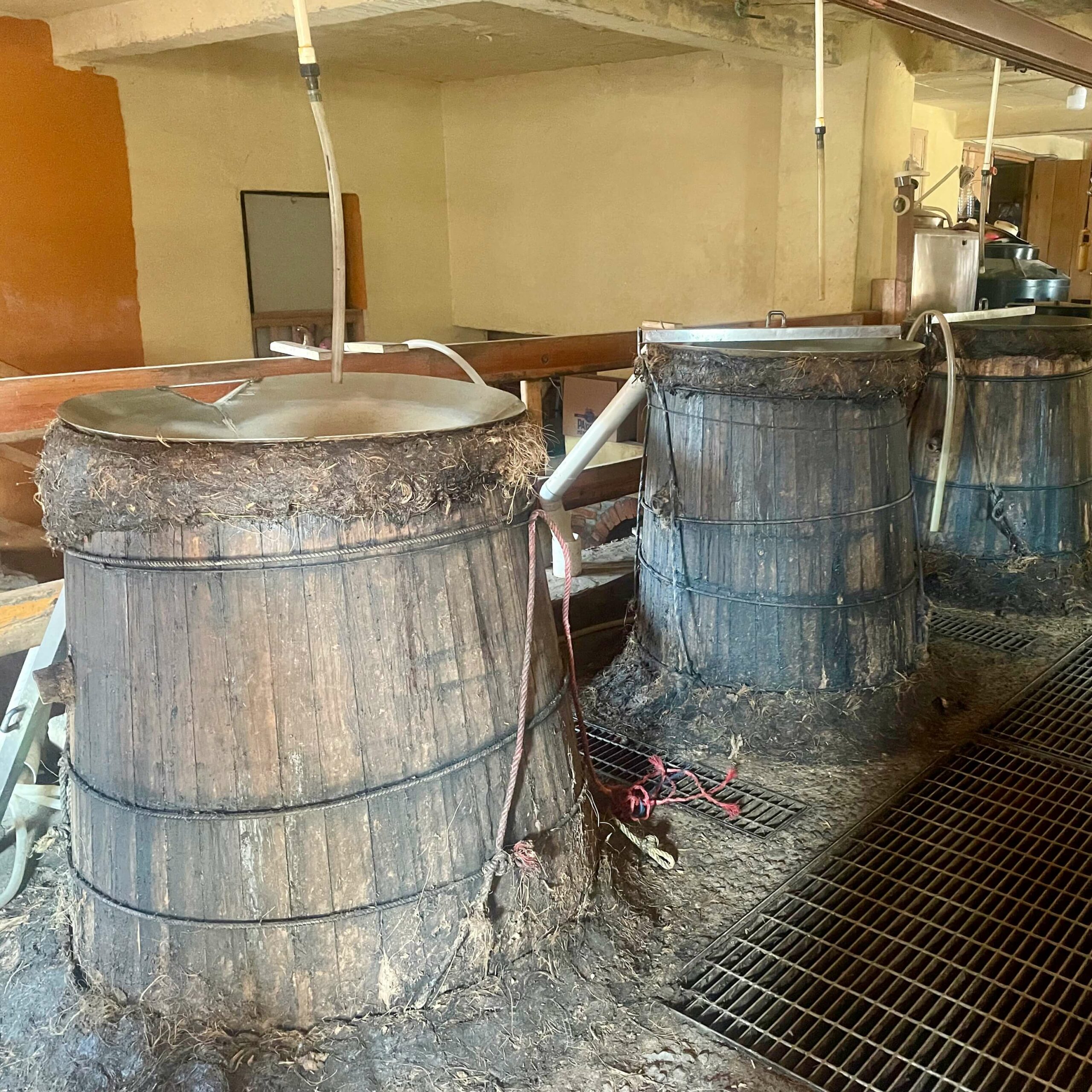

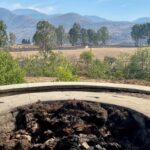
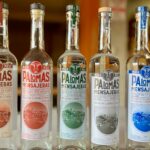
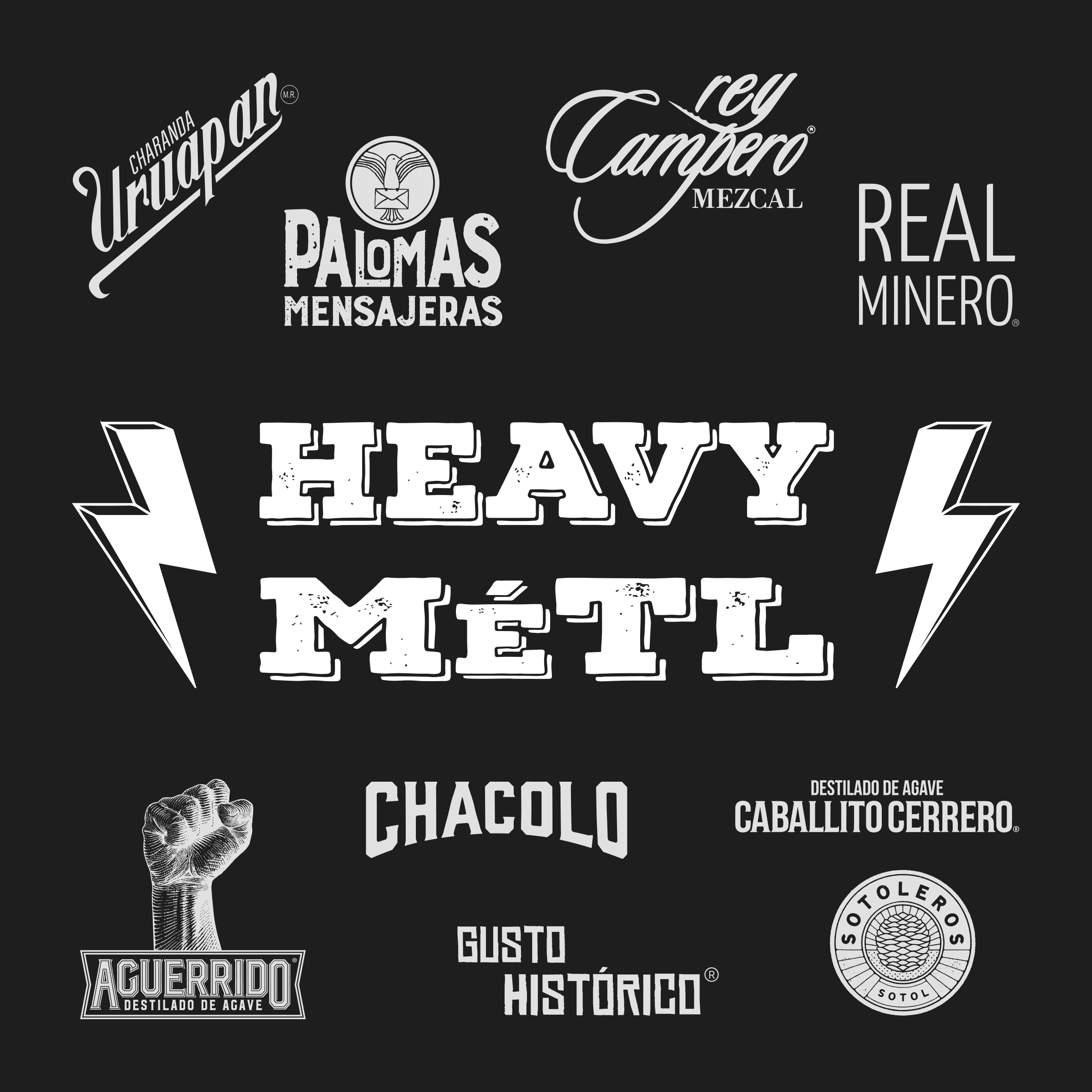
AdrianM
6 months agoI had the opportunity of getting a bottle of their Azul and Salmiana (Pulquero). Both are amazing and in line with the quality of their Alto and Cupreata. Just a phenomenal own producing brand.